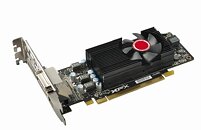
NVIDIA GeForce RTX 2050 & MX550 Laptop Graphics Cards Benchmarked
The recently announced NVIDIA GeForce RTX 2050, MX570, and MX550 Ampere graphics cards have recently been benchmarked in 3DMark TimeSpy. The RTX 2050 and MX570 both feature the Ampere GA107 GPU with 2048 CUDA cores paired with 4 GB and 2 GB of 64-bit GDDR6 memory respectively. The MX550 uses the TU117 Turing GPU with 1024 CUDA cores running at 1320 MHz paired with 2 GB of 64-bit GDDR6 12 Gbps memory. The RTX 2050 and MX570 performed similarly in the 3DMark TimeSpy benchmark achieving a graphics score of 3369 while the MX550 scores 2510 points. These new laptop graphics cards will be officially launching in Spring 2022.
































































